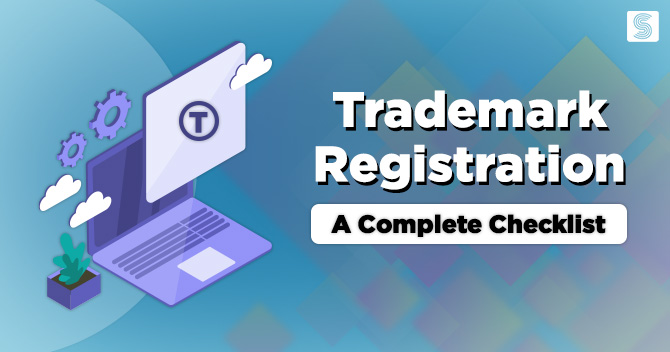Latest News
Online Trademark Registration in India

Online Trademark
Registration of Trademarks in India is governed under the Trademarks Act, 1999. Any device, label, sign, word, or letter capable of being graphically represented and distinguishing the goods from the other can be registered as a trademark under the Act. This article, in brief, explains the process of trademark registration in India.
Registration of your brand name/ company name is important because it grants you/ the applicant the right to use the mark exclusively vis-à-vis other parties. If any other party tries to use a similar mark, you can undertake appropriate proceedings against them and seek damages in return under the Trademark Act, 1999. The Trademark Act of 1999 and the rules framed thereunder govern the provisions relating to registering trademarks in India.
Anyone interested in registering their mark needs to file an application with the Registrar of Trademark either manually or through an e-filing website provided by the Controller General of Patents, Designs, and Trademarks (https://ipindiaonline.gov.in/trademarkefiling/user/frmLoginNew.aspx). Such a person may either apply by himself or through an authorized agent.
Registration Process:
The trademark registration process can be divided into the following stages:
Stage 1: Pre-Filing Process (i.e., Step I and Step II below);
Stage 2: Filing and Examination of the Mark (i.e., Step III and Step IV below); and
Stage 3: Hearing and Process Ahead (i.e., Step V below).
Stage 1: Pre-Filing Process
Step I – Identification of the type of mark and class under which the trademark is to be registered:
Under this step, the type of mark (i.e., wordmark (for ex: ‘Quick Company’) or logomark (e.g.) and trademark classes (45 classes available ranging from classes pertaining to food items to mobile software/ apps, etc.) proposed trademarks should be identified based on how the proposed mark is used by the applicant and the services/ goods provided thereunder.
Step II – Generation of a Search Report:
Under this step, one should conduct a trademark search in the database maintained by the Government (i.e., trademark registry) to check for any similar or identical trademarks that have already been registered/ pending registration with the Trademark Registry. A search report can be generated thereafter of such marks, based on which one can analyze the feasibility of registration of the proposed mark.
Stage 2: Filing and Examination Process
Step III – Filing of the Trademark Application:
Once the search report is generated and ascertained that an application for registration of a proposed trademark is to be made, details such as the applicant’s name, address, proposed mark, and the proposed class must be filed in the trademark application.

Please note that a separate trademark application will have to be filed for each type of mark and each class. Further, if the mark is already in use, the applicant should always file an affidavit stating the date from which such mark is used along with evidence supporting such use from the said date. In addition, if the application is filed through an authorized agent/ attorney, a power of attorney must be attached to the application.
Step IV – Examination of the Application by the Registry:
Once the application is filed, the examination officer will examine the proposed trademark and generate an examination report. Suppose the officer raises any objections. In that case, a reply has to be filed, and an opportunity for a personal hearing(s) will be given (on a date notified by the TM Registry). Once that is done, the mark will either be accepted or rejected.
Stage III: Hearing and Process Ahead
Step V – Hearing and the Process Ahead:
Suppose the TM Registry accepts the mark. In this case, it will be published and advertised in the Trademark Journal for 4 (four) months, and any third party/ general public is entitled to file their opposition to the proposed mark. If no oppositions are received from the public during the said period, the proposed mark will be registered, and a registration certificate will be issued.
However, if oppositions are received in the said period, appropriate action/ filing of replies/ evidence will have to be undertaken.
Timeline: 6 (six) to 8 (eight) months, if no objections and/or oppositions are received.
Sebastian was born and raised in the busy city of Abbottabad. As a journalist, Saad Mushtaq has contributed to many online publications including the PAK Today and the Huffing Post. In regards to academics, Saad Mushtaq earned a degree in business from the Abbottabad UST, Havelian. Saad Mushtaq follows the money and covers all aspects of emerging tech here at The Hear Up.Thanks










